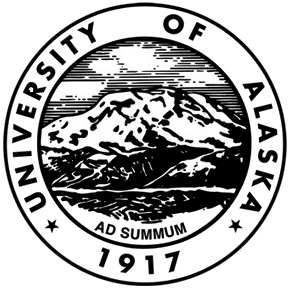The University of Alaska Fairbanks (also referred to as UAF or Alaska) is a public research university in Fairbanks, Alaska, United States. It is a flagship campus of the University of Alaska System. UAF is a land-grant, sea-grant, and space-grant institution, and it also participates in the sun-grant program through Oregon State University. UAF was established in 1917 and opened for classes in 1922. UAF was originally named Alaska Agricultural College and School of Mines and later as the University of Alaska from 1925 to 1975.
UAF is home to seven major research units: the Agricultural and Forestry Experiment Station; the Geophysical Institute, which operates the Poker Flat Research Range; the International Arctic Research Center; the Arctic Region Supercomputing Center; the Institute of Arctic Biology; the Institute of Marine Science; and the Institute of Northern Engineering. Located just 200 miles (320 km) south of the Arctic Circle, the Fairbanks campus' unique location is situated favorably for arctic and northern research. The campus' several lines of research are renowned worldwide, most notably arctic biology, arctic engineering, geophysics, supercomputing and Native Studies. The University of Alaska Museum of the North is also on the Fairbanks campus.
In addition to the Fairbanks campus, UAF encompasses seven rural and urban campuses: Bristol Bay Campus in Dillingham; Chukchi Campus in Kotzebue; Interior-Aleutians Campus, which covers both the Aleutian Islandsand the Interior; Kuskokwim Campus in Bethel; Northwest Campus in Nome; and the UAF Community and Technical College in Fairbanks, UAF's community college arm. Fairbanks is also the home of the eLearning and Distance Education, an independent learning and distance delivery program.



